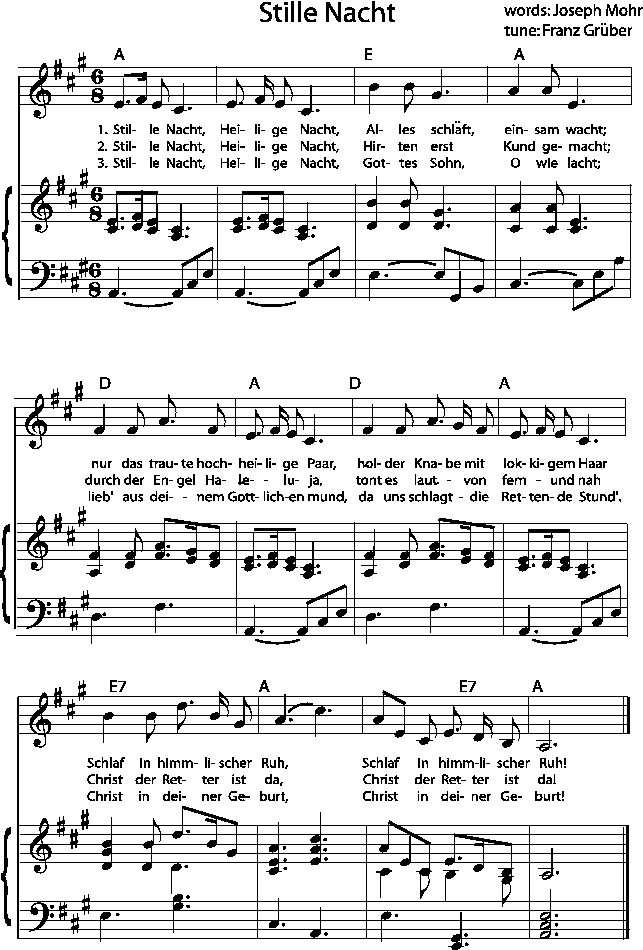| << Chapter < Page | Chapter >> Page > |
When introducing this carol, you can emphasize that some of our most familiar traditional Christmas carols were originally written in German. If the students are likely to know many Christmas carols, you might want to play "name that tune" to see which of these tunes (all of which were originally written for German words) they recognize. If they won't know many of them, just play the most familiar ones and see if they know any words to them, or ask them to raise their hands if they recognize the tune: "Lo, How a Rose E'er Blooming", "Good Christian Men, Rejoice", "O Come, Little Children", "While By my Sheep", "From Heaven High I Come to You", "Christ was Born on Christmas Day (some children may know the "Joseph dearest, Joseph mine" words to this tune), "O Christmas Tree", "Silent Night".
The pronunciation provided has been simplified to be easy for English speakers; it is not proper German pronunciation, nor does it use standard pronunciation symbols, but the author hopes that most English speakers using the pronunciation suggested would develop a "close-enough" pronunciation. The translation provided is not literal; it is the traditional singable English translation. The accompaniment is also simplified; you may prefer to use an accompaniment from another source. A guitar can provide a very satisfying and historically appropriate accompaniment to this carol.
The tune, German and English lyrics are in the public domain . Feel free to copy this arrangement under the Creative Commons license terms. The music is available here as a figure, but you can also download it as a PDF file , which will give a nicer-looking handout.

1. Shtil-leh nockt, hie-lee-geh nockt
Ah-less shlayft,ine-zahm vockt
Noor dahss trow-teh hoke-hie-lee-geh par
Hole-dair knah-beh meet loh-kee-gehm har
Shlahf een heem-lih-share rue (twice)
2. Shtil-leh nockt, hie-lee-geh nockt
Here-ten airst koont geh-mockt
Duerk dare ehn-gehl hah-leh-loo-yah
Taint ess lowt fone fairn oont nah
Creest dare ret-taw east dah (twice)

Notification Switch
Would you like to follow the 'Musical travels for children' conversation and receive update notifications?